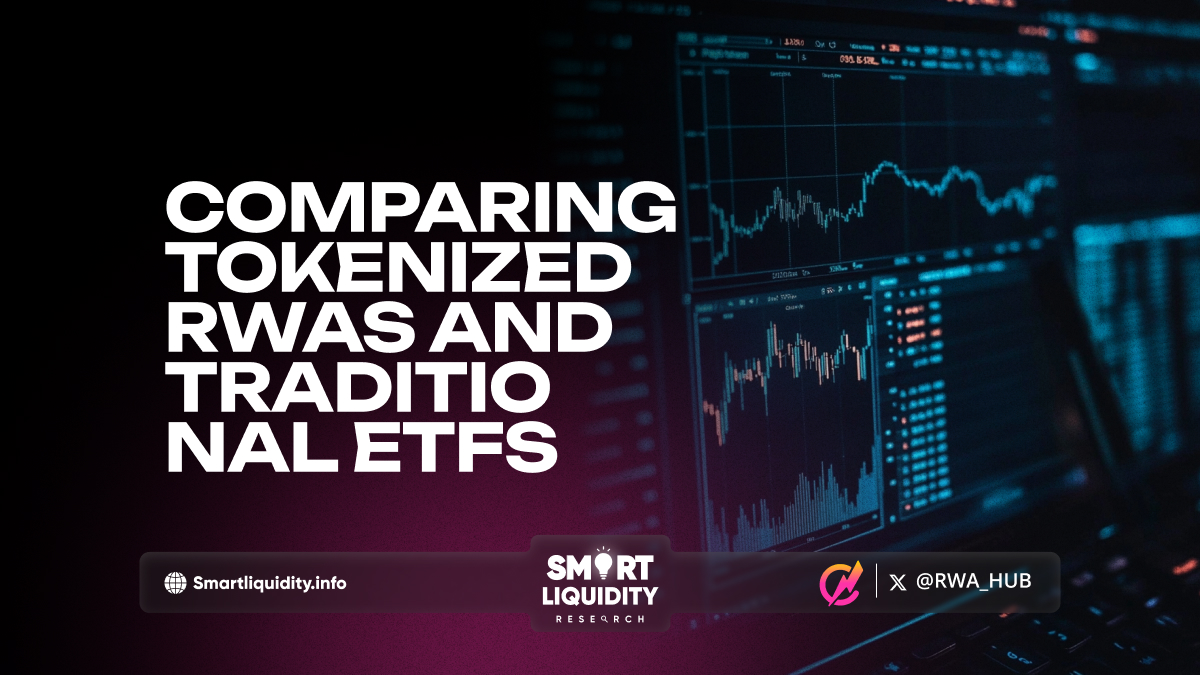Comparing Tokenized RWAs and Traditional ETFs


Discover the key differences between Tokenized RWAs vs. Traditional ETFs and explore whether tokenized real-world assets are the next evolution of exchange-traded funds.
The financial industry is evolving rapidly, leading to debates on Tokenized RWAs vs. Traditional ETFs and their potential impact on investment strategies. Both forms of investments are beneficial and complex in equal proportions, which initiates disagreements on whether tokenized RWAs are the future of ETFs.
Enhanced Accessibility and Liquidity
Easy access to diversified portfolios is provided by traditional ETFs, making investment possible for anyone. However, fractionalized ownership of assets on a blockchain is allowed by tokenized RWAs, whether it be real estate or fine art. This lowers the bar for entry, enabling more investors to participate. Also, the liquidity of tokenized assets on digital platforms is not limited to the regular business hours of other ETFs. Unlike traditional ETFs, tokenized assets are not restricted to being traded only during standard business hours.
Operational Efficiency and Transparency
Blockchain technology enables RWAs to operate in tokenized form with real-time tracking of transactions and ownership. This transparency reduces reliance on third parties, lowering business expenses and accelerating settlement times. Standard ETFs rely on established financial infrastructures with multiple intermediaries, increasing costs and processing delays. Smart contracts on tokenized assets streamline processes and enhance operational efficiency.
Regulatory Landscape and Adoption Challenges
Standard ETFs benefit from established regulations, instilling investor confidence, while tokenized RWAs face tougher challenges. Varying digital asset rules create uncertainty, slowing adoption. Managing tokenized ETFs for traditional assets adds complexity.
Future Outlook: Integration or Disruption?
Almost all major financial players are exploring early-stage blockchain applications, increasing the possibility of tokenization. For instance, State Street is studying the feasibility of offering tokenized bonds and money market funds within the cryptocurrency ecosystem. An Abu Dhabi-based firm has tokenized U.S. Treasuries’ funds, demonstrating a shift in vision among traditional asset holders. Tokenized RWAs may enhance or reshape traditional ETFs, depending on regulatory and systemic solutions.
Conclusion
The prospects of tokenized RWAs yielding certain enhancements in availability, liquidity, and efficiency are promising but also face dead weight regulatory acceptance and significant infrastructure hurdles. Traditional ETFs offer a reliable way to invest, but tokenomics advancements may remove boundaries in developing financial markets. Asset managers and investors must consider these issues to understand the future of asset management.
DISCLAIMER:
“The information provided on this platform is for general informational purposes only. All information on the platform is provided in good faith; however, we make no representation or warranty of any kind, express or implied, regarding the accuracy, adequacy, validity, reliability, availability, or completeness of any information on the platform.”




